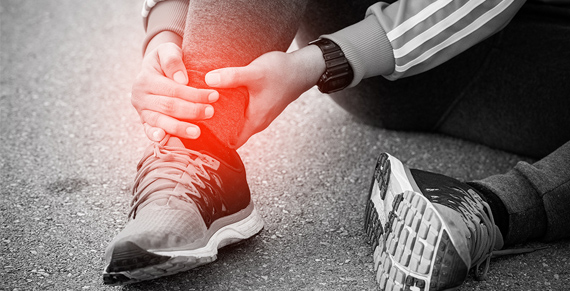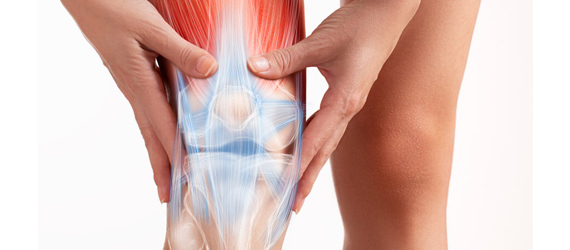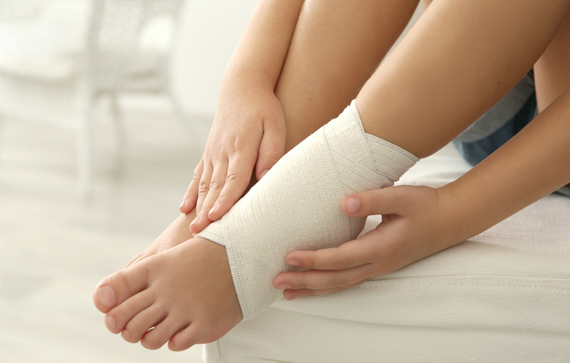Sprains and Strains
The most common soft-tissue injuries incurred are sprains and strains. This can be the result of a single incident, such as a fall, or it may be due to repeated overuse of the muscles and joints. In overuse cases, small amounts of stress accumulate and damage the supporting structures of the joints.
Sprains
A sprain is a simple stretch or tear of the ligaments; the strong bands of connective tissue that hold one bone to another. All joints have ligaments that bind the bones together, allowing controlled motion by the muscles. The most common ligament injury is at the ankle. A sprained ankle occurs when your foot
turns inward and your weight places excessive tension on the ligaments of your outer ankle tearing the fibers. Sprains can cause rapid swelling. Generally, the greater the pain and swelling, the more severe the injury.
There are three degrees of sprains:
- Mild- The ligament is over stretched or tears slightly. The area is somewhat painful, especially with movement. There is tenderness if you touch the area. There is little swelling, and you can put weight on the joint.
- Moderate- The fibers of the ligament tear, but not completely. The joint is tender, painful, and difficult to move. It is very uncomfortable to put your weight on it. The area swells rapidly and may be discolored from bleeding under the skin. This discoloration may take a day or two to see.
- Severe- One or more of the ligaments tear completely. The area is extremely painful. You can’t move your joint normally or put any weight on it. If you try to walk, your leg feels as if it will give way. The joint becomes very swollen and
often discolored.


Strains
Strains are milder than sprains and affect the muscles and tendons, not the ligaments. Strains and sprains often occur together following an injury. A strain is the result of an acute or chronic injury to either a muscle or a tendon, commonly in the foot or leg. The strain may be a simple stretch in your muscle or tendon, or it may be a partial or complete tear in the muscle-tendon combination. Repeated strains that do not heal completely lead to a condition called tendonitis. Tendonitis is not just a single injury, but a series of small stresses that repeatedly aggravate the tendon.
Bursitis
Untreated or incompletely healed strains and sprains cause altered joint mechanics. Over time, this altered mechanics causes stress on a bursae of the joints. The bursa is a sac filled with fluid. They are located between a bone and a tendon or muscle. They allow the tendon to slide smoothly over the bone. Repeated stress and overuse can cause the bursa to swell. This is called bursitis, and is usually associated with tendonitis.
Home Care
Most mild strains and sprains heal with “R.I.C.E.” The letters stand for Rest, Ice, Compression and Elevation. You want to prevent added injury and reduce swelling. If the soreness lasts more than two to three days, it may require professional treatment.
Treatment
Reestablishing normal joint alignment and support of the muscles and ligaments is necessary to restore function. In moderate to severe injuries, muscle coordination may be lost; untreated, strain/sprain injuries may lead to chronic recurrence and arthritic changes in the joints. Nutritional support may be required to speed the healing. Additionally, supportive measures such as taping or orthotics may help to normalize function in the damaged joint. In many cases, exercises will be recommended to reestablish good muscle support and coordination. By normalizing the function of the joint and the supportive tissues, you help prevent or slow down arthritic changes that take years to occur.

